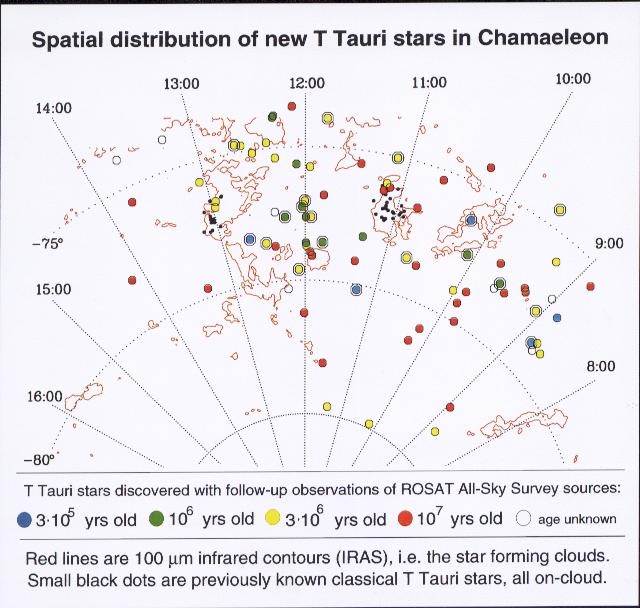
 Credit: ROSAT Project and MPE
Credit: ROSAT Project and MPE
Naked Newborns
Stars are formed out of huge, massive clouds of gas and dust. These clouds
begin to gravitationally collapse, forming a dense core which will
eventually become a star. To understand how this process occurs astronomers
need to be able to identify newly formed stars. One good place to look for
new stars is near cold, thick interstellar clouds. One good way to look
for these new stars is X-ray imaging. X-ray imaging is useful since young
stars are typically bright X-ray sources due to enhanced stellar activity,
and also since X-rays have great penetrating power and can pass through
even the thickest of interstellar clouds. The image above shows young
stars near a molecular cloud complex in the constellation of Chamaeleon.
These stars were identified as bright X-ray sources by ROSAT during ROSAT's All-Sky
Survey, and ground-based followup observations confirmed them as young
stars with ages between 300,000 and 10 million years old. Surprisingly
many of these stars are found outside the molecular clouds; astronomers
speculate that either these "bare" stars were ejected from their birth
clouds, or else the birth clouds were evaporated by the light from the
star.
Last Week *
HEA Dictionary * Archive
* Search HEAPOW
* Education
Each week the HEASARC
brings you new, exciting and beautiful images from X-ray and Gamma ray
astronomy. Check back each week and be sure to check out the HEAPOW archive!
Page Author: Dr. Michael F.
Corcoran
Last modified August 27, 2001


